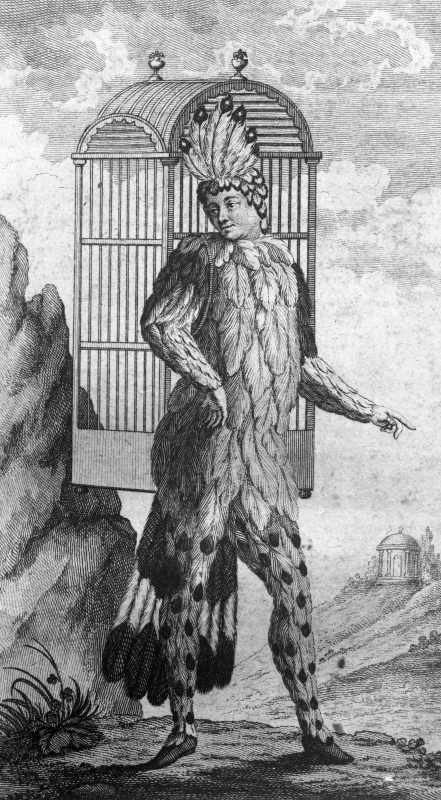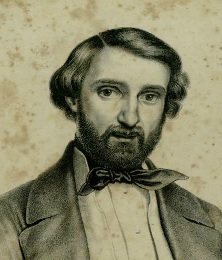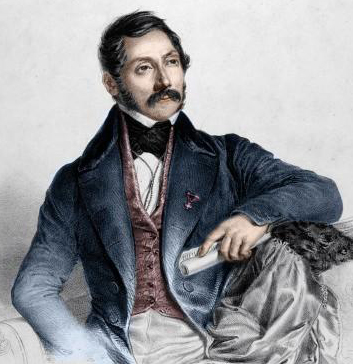|
Ewandro Stenzowski
Ewandro Stenzowski (born September 27, 1984) is a Brazilian operatic tenor and veteran of the Brazilian Marine Corps. He appeared in concerts and leading tenor roles in South America and Europe. Biography Ewandro Cruz Stenzowski was born in Curitiba, Brazil on September 27, 1984. In Brazil, he earned a Bachelor of Music degree in lyric singing from the Federal University of Rio de Janeiro. He received his Master of Music in opera performance and ''Solistenexamen'' in Germany, at the State University of Music and Performing Arts Stuttgart. Career and education Brazil Stenzowski started his singing studies with mezzo-soprano at the age of 14. In 1999, at age 15, he became the youngest student in the singing program of the School of Music and Fine Arts of Paraná as a student of Lázaro Wenger and Denise Sartori, and made his debut as a concert singer with 16 at ''II Festival Municipal da Canção Ecológica'' (FEMUCE) in Pinhais, Paraná. Three years later, in 2002, he r ... [...More Info...] [...Related Items...] OR: [Wikipedia] [Google] [Baidu] |
Curitiba
Curitiba () is the capital and largest city in the state of Paraná in Brazil. The city's population was 1,948,626 , making it the eighth most populous city in Brazil and the largest in Brazil's South Region. The Curitiba Metropolitan area comprises 26 municipalities with a total population of over 3.2 million ( IBGE estimate in 2010), making it the seventh most populous metropolitan area in the country. The city sits on a plateau at above sea level. It is located west of the seaport of Paranaguá and is served by the Afonso Pena International and Bacacheri airports. Curitiba is an important cultural, political, and economic center in Latin America and hosts the Federal University of Paraná, established in 1912. In the 1700s, Curitiba's favorable location between cattle-breeding countryside and marketplaces led to a successful cattle trade and the city's first major expansion. Later, between 1850 and 1950, it grew due to logging and agricultural expansion in P ... [...More Info...] [...Related Items...] OR: [Wikipedia] [Google] [Baidu] |
Il Guarany
''Il Guarany'' (''The Guarany'') is an opera ballo composed by Antônio Carlos Gomes, based on the novel '' O Guarani'' by José de Alencar. Its libretto, in Italian rather than Gomes' native Portuguese, was written by and . The work is notable as the first Brazilian opera to gain acclaim outside Brazil.Volpe, Maria Alice, "Remaking the Brazilian Myth of National Foundation: ''Il Guarany''" (Autumn–Winter 2002). ''Latin American Music Review''/''Revista de Música Latinoamericana'', 23 (2): pp. 179–194. Maria Alice Volpe has analysed the historical subtext of the indianism movement behind ''Il Guarany''. The operatic version of the story takes place near Rio de Janeiro in 1560, and the plot centers around an interracial love story between Pery, a Guarani indian prince, and Cecilia, the daughter of a Portuguese nobleman. The work emphasizes the Romanticized concept of the "noble savage" in an exotic Brazilian tropical setting as well as the concept of racial miscegenation, wh ... [...More Info...] [...Related Items...] OR: [Wikipedia] [Google] [Baidu] |
North Rhine-Westphalia
North Rhine-Westphalia (german: Nordrhein-Westfalen, ; li, Noordrien-Wesfale ; nds, Noordrhien-Westfalen; ksh, Noodrhing-Wäßßfaale), commonly shortened to NRW (), is a state (''Land'') in Western Germany. With more than 18 million inhabitants, it is the most populous state of Germany. Apart from the city-states, it is also the most densely populated state in Germany. Covering an area of , it is the fourth-largest German state by size. North Rhine-Westphalia features 30 of the 81 German municipalities with over 100,000 inhabitants, including Cologne (over 1 million), the state capital Düsseldorf, Dortmund and Essen (all about 600,000 inhabitants) and other cities predominantly located in the Rhine-Ruhr metropolitan area, the largest urban area in Germany and the fourth-largest on the European continent. The location of the Rhine-Ruhr at the heart of the European Blue Banana makes it well connected to other major European cities and metropolitan areas like the R ... [...More Info...] [...Related Items...] OR: [Wikipedia] [Google] [Baidu] |
Landestheater Detmold
Landestheater Detmold is a theatre for operas, operettas, musicals, ballets, and stage plays in Detmold, North Rhine-Westphalia, Germany. It began as the Hochfürstliches Lippisches Hoftheater, founded in 1825 by the court of Lippe. The company has five venues in Detmold. With its guest appearances in more than a hundred locations in Germany and neighboring countries, the theatre company states that it is the largest touring company in Europe. History In 1820 Leopold II, Prince of Lippe, with the support of his mother Princess Pauline, decided to have a court theatre built in Detmold. He commissioned the architect . The groundbreaking ceremony took place on 18 April 1825. On 8 November 1825, the curtain of the Hochfürstliches Lippisches Hoftheater went up for the first time for Mozart's opera ''La clemenza di Tito'', after only seven months of construction. August Pichler was appointed director of the new theatre. The respected Pichler troupe had been guests in the old Det ... [...More Info...] [...Related Items...] OR: [Wikipedia] [Google] [Baidu] |
L'elisir D'amore
''L'elisir d'amore'' (''The Elixir of Love'', ) is a ' ( opera buffa) in two acts by the Italian composer Gaetano Donizetti. Felice Romani wrote the Italian libretto, after Eugène Scribe's libretto for Daniel Auber's ' (1831). The opera premiered on 12 May 1832 at the Teatro della Canobbiana in Milan. Background Written in haste in a six-week period, ''L'elisir d'amore'' was the most often performed opera in Italy between 1838 and 1848 and has remained continually in the international opera repertory. Today it is one of the most frequently performed of all Donizetti's operas: it appears as number 13 on the Operabase list of the most-performed operas worldwide in the five seasons between 2008 and 2013. There are a large number of recordings. It contains the popular tenor aria " Una furtiva lagrima", a '' romanza'' that has a considerable performance history in the concert hall. Donizetti insisted on a number of changes from the original Scribe libretto. The best known ... [...More Info...] [...Related Items...] OR: [Wikipedia] [Google] [Baidu] |
Jenůfa
''Její pastorkyňa'' (''Her Stepdaughter''; commonly known as ''Jenůfa'' ) is an opera in three acts by Leoš Janáček to a Czech libretto by the composer, based on the play ''Její pastorkyňa'' by Gabriela Preissová. It was first performed at the National Theatre, Brno on 21 January 1904. Composed between 1896 and 1902, it is among the first operas written in prose. The first of Janáček's operas in which his distinctive voice can clearly be heard, it is a grim story of infanticide and redemption. Like the playwright's original work, it is known for its unsentimental realism. While today it is heard in the composer's original version, ''Jenůfas early popularity was due to a revised version by Karel Kovařovic, altering what was considered its eccentric style and orchestration. Thus altered, it was well-received, first in Prague, and particularly after its Vienna première also worldwide. More than 70 years passed before audiences again heard it in Janáček's origina ... [...More Info...] [...Related Items...] OR: [Wikipedia] [Google] [Baidu] |
Ariadne Auf Naxos
(''Ariadne on Naxos''), Opus number, Op. 60, is a 1912 opera by Richard Strauss with a German libretto by Hugo von Hofmannsthal. The opera's unusual combination of elements of low commedia dell'arte with those of high opera seria points up one of the work's principal themes: the competition between high and low art for the public's attention. First version (1912) The opera was originally conceived as a 30-minute divertissement to be performed at the end of Hofmannsthal's adaptation of Molière's play ''Le Bourgeois gentilhomme.'' Besides the opera, Strauss provided Le bourgeois gentilhomme (Strauss), incidental music to be performed during the play. In the end, the opera occupied ninety minutes, and the performance of play plus opera occupied over six hours. It was first performed at the Staatsoper Stuttgart, Hoftheater Stuttgart on 25 October 1912, directed by Max Reinhardt. The combination of the play and opera proved to be unsatisfactory to the audience: those who had come ... [...More Info...] [...Related Items...] OR: [Wikipedia] [Google] [Baidu] |
The Magic Flute
''The Magic Flute'' (German: , ), K. 620, is an opera in two acts by Wolfgang Amadeus Mozart to a German libretto by Emanuel Schikaneder. The work is in the form of a '' Singspiel'', a popular form during the time it was written that included both singing and spoken dialogue. The work premiered on 30 September 1791 at Schikaneder's theatre, the Freihaus-Theater auf der Wieden in Vienna, just two months before the composer's premature death. Still a staple of the opera repertory, its popularity was reflected by two immediate sequels, Peter Winter's '' Das Labyrinth oder Der Kampf mit den Elementen. Der Zauberflöte zweyter Theil'' (1798) and a fragmentary libretto by Johann Wolfgang von Goethe titled '' The Magic Flute Part Two''. The allegorical plot was influenced by Schikaneder and Mozart's interest in Freemasonry and concerns the initiation of Prince Tamino. Enlisted by the Queen of the Night to rescue her daughter Pamina from the high priest Sarastro, Tamino comes ... [...More Info...] [...Related Items...] OR: [Wikipedia] [Google] [Baidu] |
Nabucco
''Nabucco'' (, short for Nabucodonosor ; en, " Nebuchadnezzar") is an Italian-language opera Opera is a form of theatre in which music is a fundamental component and dramatic roles are taken by singers. Such a "work" (the literal translation of the Italian word "opera") is typically a collaboration between a composer and a libre ... in four acts composed in 1841 by Giuseppe Verdi to an Italian libretto by Temistocle Solera. The libretto is based on the biblical books of Books of Kings, 2 Kings, Book of Jeremiah, Jeremiah, Book of Lamentations, Lamentations and Book of Daniel, Daniel and the 1836 play by Auguste Anicet-Bourgeois and Francis Cornu. However, Antonio Cortese's ballet adaptation of the play (with its necessary simplifications), given at La Scala in 1836, was a more important source for Solera than the play itself. Under its original name of ''Nabucodonosor'', the opera was first performed at La Scala in Milan on 9 March 1842. ''Nabucco'' is the opera tha ... [...More Info...] [...Related Items...] OR: [Wikipedia] [Google] [Baidu] |
Norma (opera)
''Norma'' () is a ''tragedia lirica'' or opera in two acts by Vincenzo Bellini with libretto by Felice Romani after the play ''Norma, ou L'infanticide'' (''Norma, or The Infanticide'') by Alexandre Soumet. It was first produced at La Scala in Milan on 26 December 1831. The opera is regarded as a leading example of the bel canto genre, and the soprano prayer "Casta diva" in act 1 is a famous piece. Among the well known singers of Norma of the first half of the 20th century was Rosa Ponselle who played the role in New York and London. Notable exponents of the title role in the post-war period have been Maria Callas, Leyla Gencer, Joan Sutherland, and Montserrat Caballé. Composition history Crivelli and Company were managing both La Scala and La Fenice in Venice, and as a result, in April–May 1830 Bellini was able to negotiate a contract with them for two operas, one at each theatre. The opera for December 1831 at La Scala became ''Norma'', while the one for the 1832 C ... [...More Info...] [...Related Items...] OR: [Wikipedia] [Google] [Baidu] |
Destiny (Janáček)
''Destiny'' (also known as ''Fate'', cs, Osud) is an opera in three acts by Leoš Janáček to a Czech libretto by the composer and Fedora Bartošová. Janáček began the work in 1903 and completed it in 1907. The inspiration for the opera came from a visit by Janáček in the summer of 1903, after the death of his daughter Olga, to the spa at Luhačovice. There, Janáček met Kamila Urválková, who had been the subject of an opera by Ludvík Čelanský, ''Kamila'', where she felt that Čelanský had falsely depicted her personality. After learning that Janáček was a composer, Urválková persuaded Janáček to write another opera to counteract Čelanský's portrait of her.Tyrrell, John, "Janáček's ''Fate''" (January 1972). ''The Musical Times'', 113 (1547): pp. 34–37. Janáček submitted the opera to the Brno Theatre in 1906, and to the Vinohrady Theatre in Prague in 1907, but both theatres rejected the score. The score stayed with the Vinohrady Theatre even after ... [...More Info...] [...Related Items...] OR: [Wikipedia] [Google] [Baidu] |
Staatsoper Stuttgart
The Staatsoper Stuttgart (Stuttgart State Opera) is a German opera company based in Stuttgart, the capital of Baden-Württemberg, Germany. The Staatsorchester Stuttgart serves as its resident orchestra. History Performances of operas, ballet and plays in Stuttgart took place from the 17th century at the hall of . The probably first opera production was in 1660 the singspiel ''Der Raub der Proserpina'' by Hofkapellmeister Samuel Capricornus. Four years later, a permanent stage was established. In 1750, the building was remodeled as Stuttgart's opera house, named ''Königliches Hoftheater'' (Royal Court Theatre) in 1811. It burnt down in 1902, and opera was performed in a provisional ''Interimstheater''. Today's opera house was built from 1909 to 1912 by architect Max Littmann from Munich, with two halls, ''Großes Haus'' and ''Kleines Haus''. After the end of the monarchy in 1918, the theatres were named ''Württembergische Landestheater''. The ''Kleines Haus'', site of the world ... [...More Info...] [...Related Items...] OR: [Wikipedia] [Google] [Baidu] |
.jpg)




